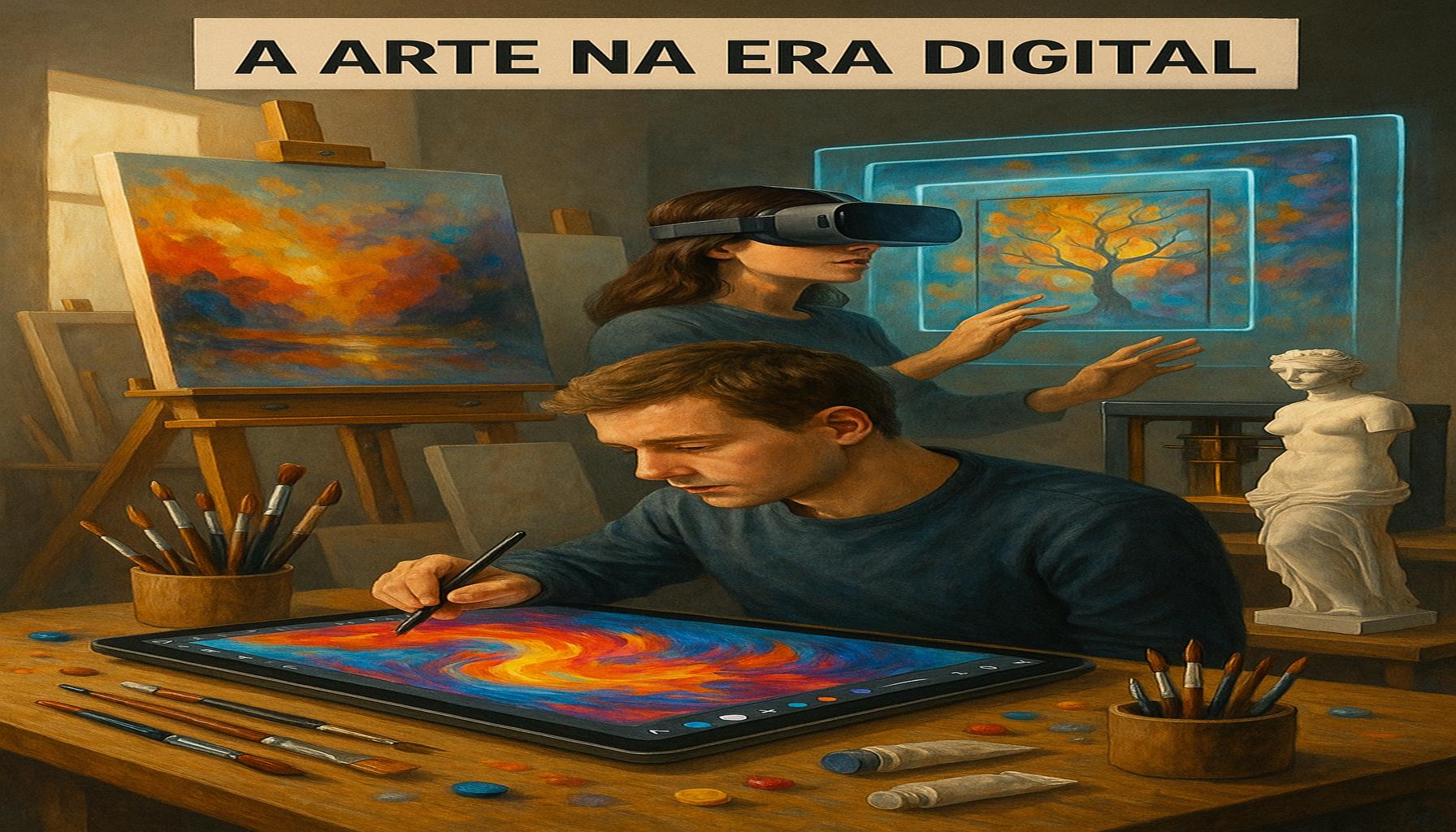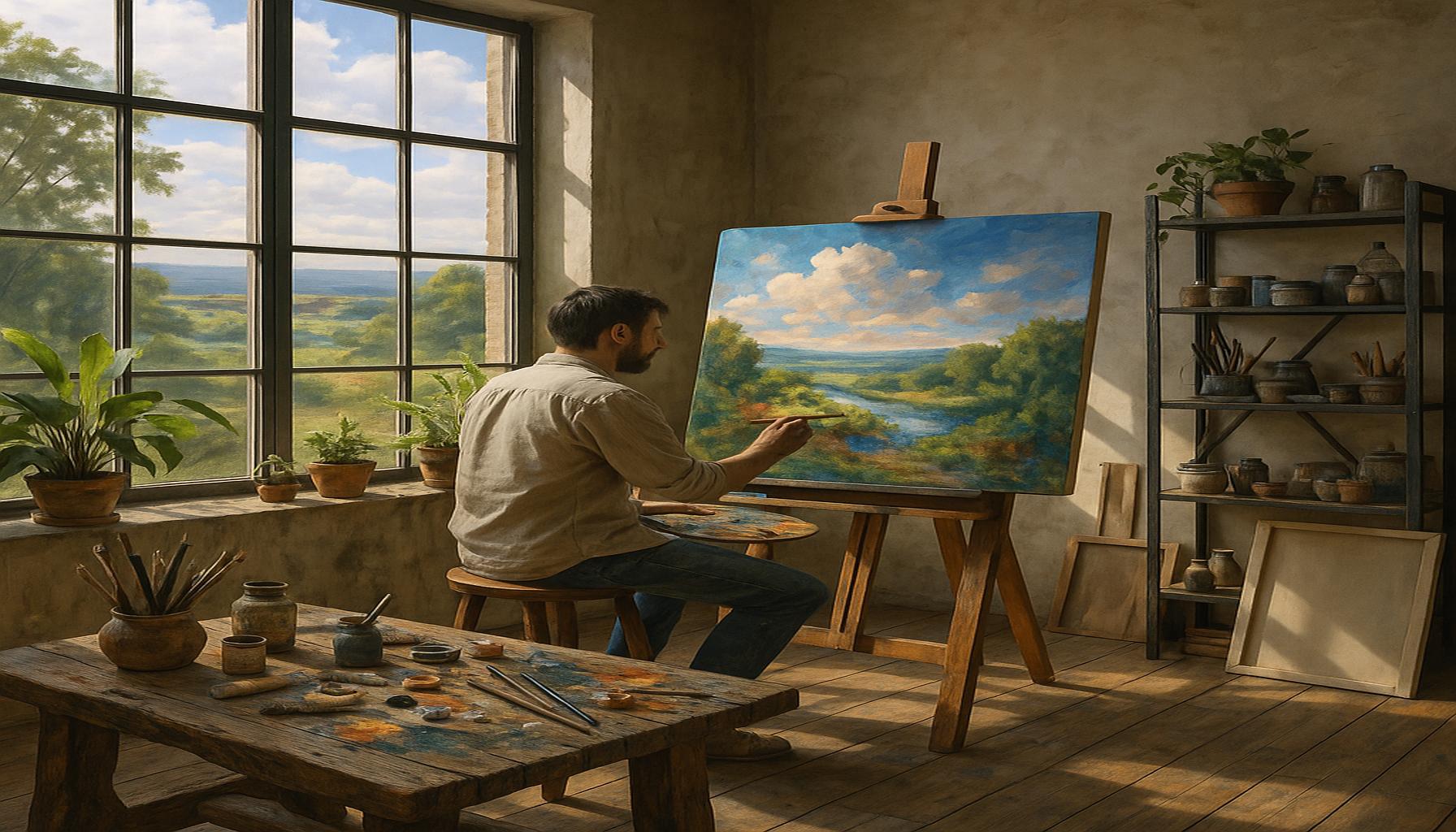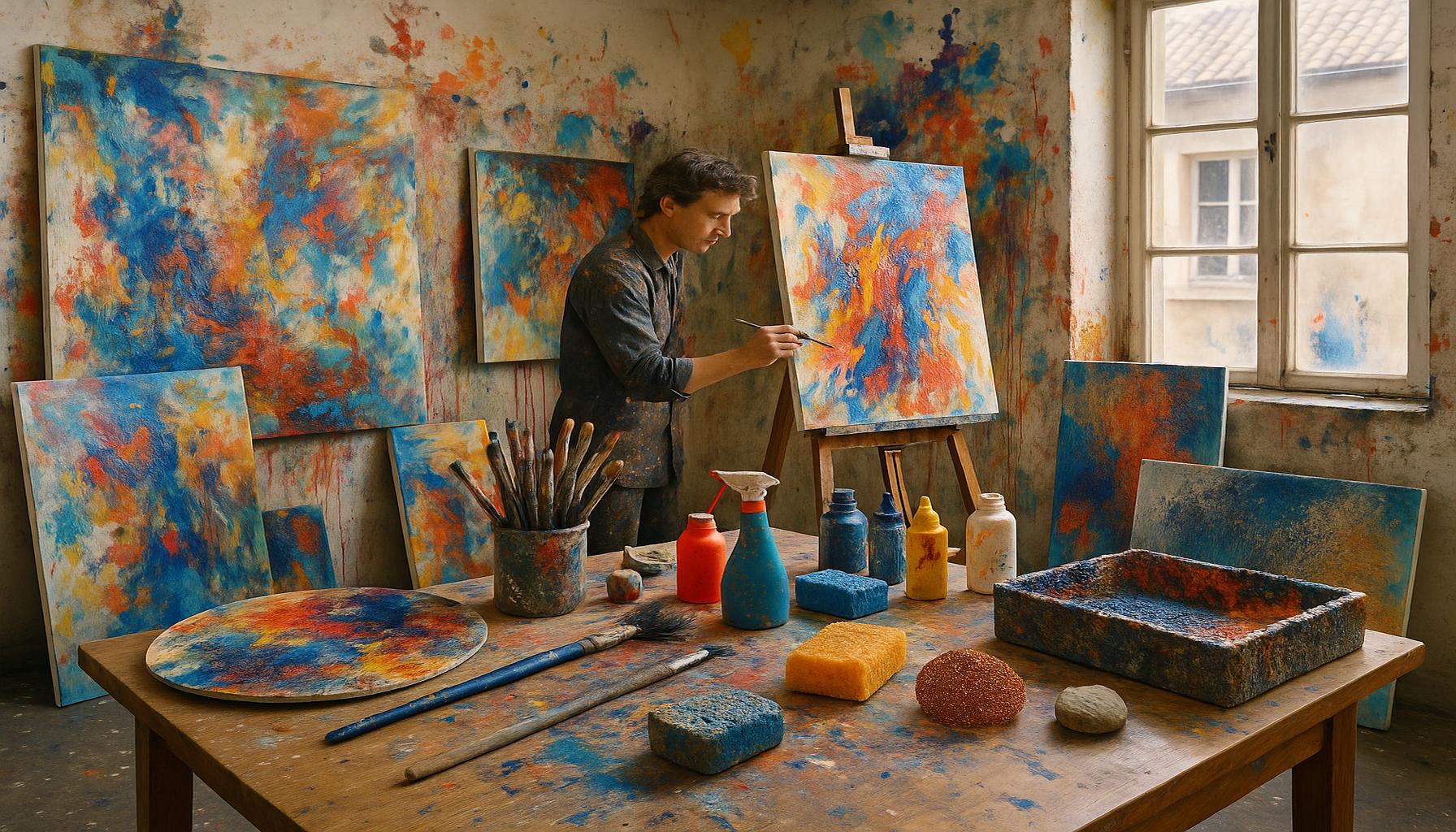The Role of Community Art: Strengthening Bonds and Creating Connections Through Creative Hobbies
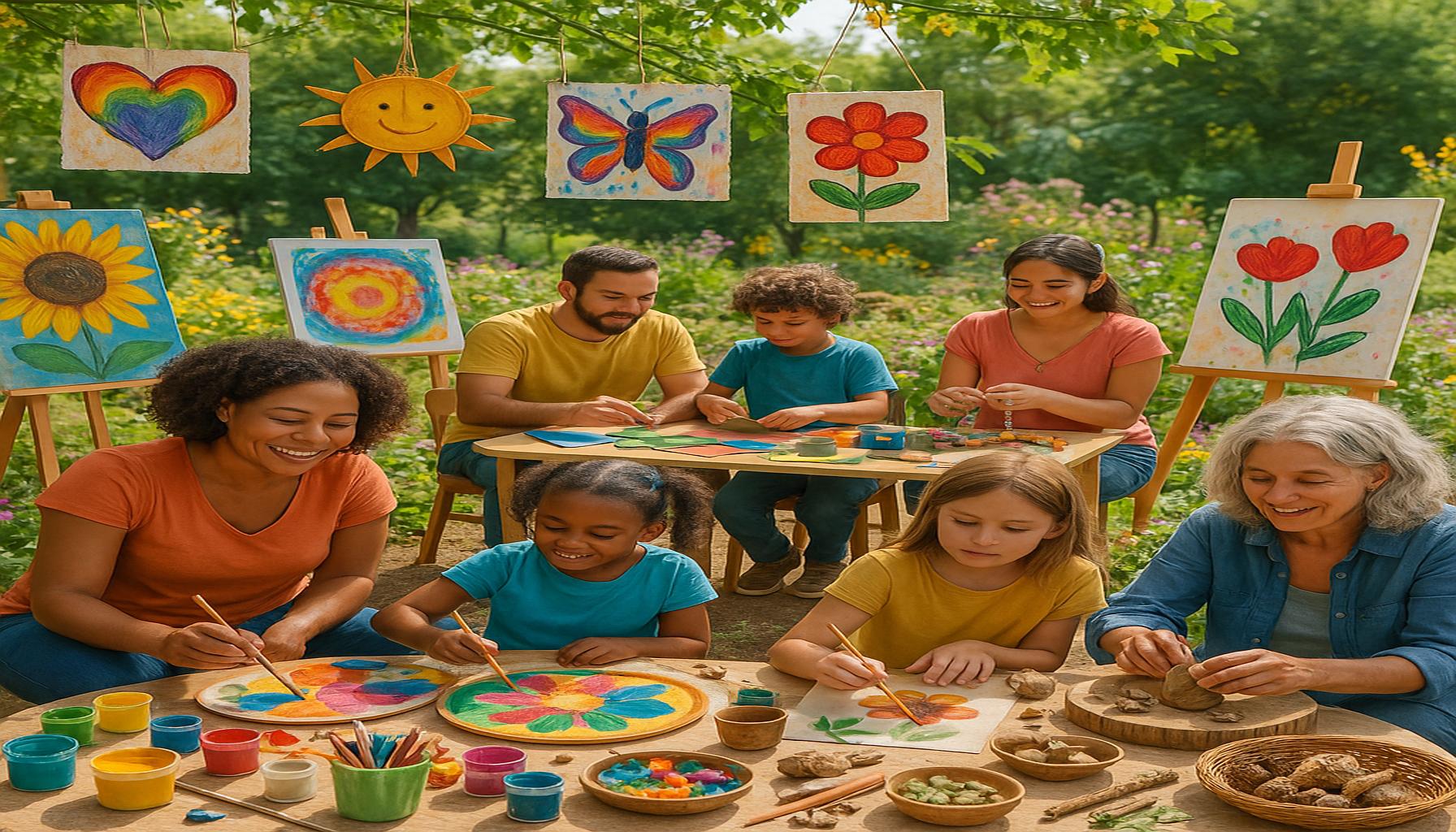
The Power of Community Art
Community art serves as a vibrant canvas for personal expression and collective storytelling. Through various creative hobbies, individuals come together to forge connections and enrich their local environments. This unique intersection of creativity and community building fosters a sense of belonging that is crucial in today’s fast-paced world. In a society often marked by division, community art acts as a unifying force, creating spaces where diverse voices can share their stories and perspectives.
Art as a Unifier
Community art initiatives can bridge cultural, social, and economic divides. For instance, murals painted in urban neighborhoods often reflect the histories and aspirations of the local populace, celebrating heritage while inviting dialogue. In Los Angeles, the “WritersBLOC” project brings together teen artists from different backgrounds to explore themes of identity through art, fostering understanding and empathy among participants. Programs like these illustrate how collective art-making can serve as a catalyst for social cohesion and cultural exchange.
Creative Hobbies
Activities like painting, pottery, and dance encourage collaboration and skill-sharing among participants. In towns across America, community centers host workshops where beginner and experienced artists codevelop skills, cultivating mentorship and collaboration. For example, the Muddy Waters Clay Center in Eugene, Oregon, offers inclusive pottery classes that unite individuals from varied backgrounds. Here, participants not only create tangible art pieces but also share life experiences and build a sense of community, igniting new friendships through shared creativity.
Strengthening Relationships
Group projects and workshops promote teamwork and understanding, further enhancing community ties. Initiatives such as public art installations or theatre productions require collective effort, helping participants develop interpersonal skills and mutual respect. In Philadelphia, the “Mural Arts Program” engages artists and community members, transforming blank walls into compelling narratives that tell the stories of local neighborhoods. The process itself often leads to stronger bonds among residents, as they work side by side toward a common goal.
The Broader Impact
The impact of community art extends beyond mere aesthetics; it plays a significant role in enhancing mental well-being and personal growth. Workshops not only allow individuals to hone their artistic skills but also serve as platforms for emotional healing and self-discovery. Studies have shown that engaging in creative activities can reduce stress and depression, making artistic endeavors invaluable in nurturing mental health.
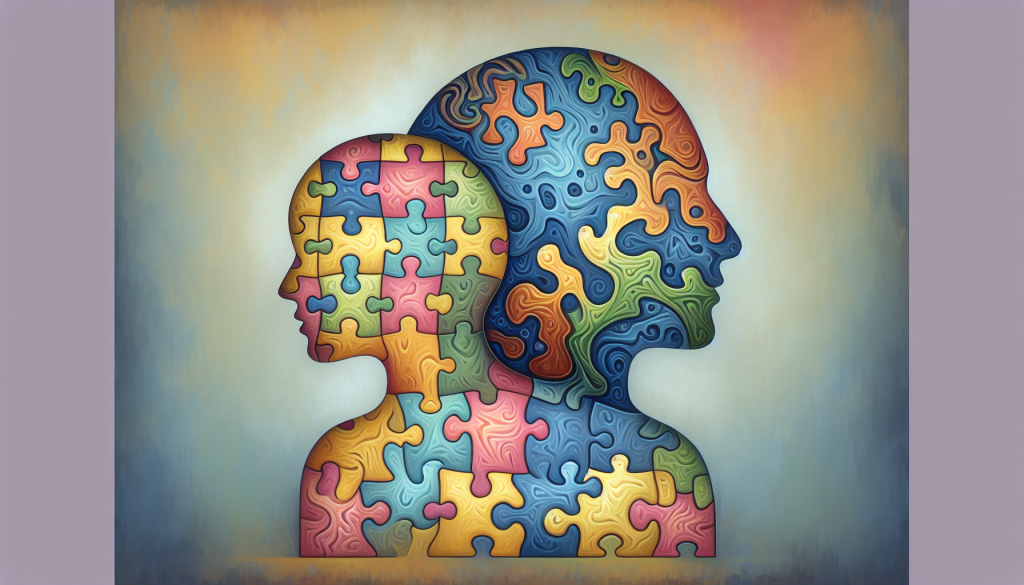
Furthermore, neighborhoods that embrace artistic endeavors experience greater cohesion and a shared sense of purpose. In exploring the role of community art, we uncover how such initiatives influence local identity and encourage civic engagement. For instance, public art events can serve as a rallying point for advocacy and social justice, empowering residents to reclaim their spaces and voices. As we delve into this topic, we will investigate various examples from across the United States, showcasing how creativity can catalyze profound social change, strengthening not only art communities but the very fabric of society itself.
DISCOVER MORE: Click here to dive into watercolor techniques
Connecting Through Creativity: The Essence of Community Art
At the heart of community art lies a remarkable potential to foster deep connections among individuals through shared creative experiences. With each brush stroke, piece of clay molded, or dance step taken, participants engage in a form of dialogue that transcends words. Whether in community centers, local parks, or urban streets, the act of creating together invites individuals to share not just their artistic talents, but also their stories, struggles, and triumphs. This approach to creativity nurtures relationships, creating networks of support that serve as the foundation for strong communities.
The Transformative Impact of Shared Art Experiences
Engaging in community art projects significantly impacts participants, as they collaborate to create something greater than themselves. These collective endeavors cultivate relationships by allowing participants to:
- Build Trust: Trust flourishes when people collaborate towards a common goal, breaking down barriers and fostering open communication.
- Encourage Open Expression: Safe spaces for creativity invite individuals to express their thoughts and emotions, reinforcing the connectedness among people from diverse backgrounds.
- Enhance Social Skills: Working in groups sharpens vital interpersonal skills, such as listening, empathy, and conflict resolution.
The sense of accomplishment derived from collaborative projects can be immensely gratifying. For example, during the “Culture Days” events in cities like Chicago, local artists and community members join forces to create public murals that celebrate the richness of their neighborhoods. These projects not only beautify the environment but also serve as powerful reminders of the community’s shared heritage and aspirations.
Inspiring Future Generations
Moreover, community art not only strengthens existing relationships but also lays the groundwork for future generations to thrive in connected environments. By involving youth in creative activities, communities instill in them a sense of ownership and pride. Programs like “ArtWorks,” which provides mentoring to young artists in cities such as San Francisco, emphasize the importance of mentorship and peer collaboration. Here, young minds learn from seasoned creatives while forging friendships and developing a stronger sense of belonging.
Such initiatives often lead to a ripple effect, where participants become advocates for community art and social connection. As these young artists grow, they carry forward the spirit of collaboration and creativity, enriching the community fabric and ensuring that the legacy of art continues to thrive.
The Road Ahead
The road ahead for community art is filled with promise and potential. As towns and cities continue to embrace the importance of creative expression, we can anticipate a surge in community-driven initiatives aimed at fostering connections and strengthening bonds through art. In the coming sections, we will explore specific examples of successful community art initiatives, showcasing how they serve as powerful vehicles for transformation, resilience, and civic engagement.
The Transformative Power of Community Art
Community art goes beyond just aesthetic appeal; it plays a crucial role in fostering social connections and enhancing community engagement. By encouraging participation from diverse groups, it melds individual creativity into a collective experience. The atmosphere created during these art-driven events can diminish barriers, enabling voices often unheard to surface, which is vital for community cohesion.Workshops and Collaborative Projects serve as a vital platform for personal expression while simultaneously promoting teamwork. Participants often forge friendships as they collaborate on varying artistic endeavors, effectively becoming a tapestry woven from different backgrounds. This collaboration not only nurtures trust and understanding among participants but also encourages innovative thinking, showcasing how sharing ideas can lead to unique creative outcomes.Moreover, the utilization of public spaces for artistic exhibitions can transform the environment, turning streets into vibrant galleries. This visibility invites the community to engage more deeply and re-establishes a sense of belonging and pride among residents. Local artists gain a platform to showcase their talents, which can enhance their careers and further strengthen community ties.Involving schools and educational institutions in community art initiatives is particularly impactful. Students learn not only creative skills but also the importance of civic responsibility and collaboration. Educational programs that emphasize artistic expression allow young individuals to explore their identities while connecting with their peers, contributing to well-rounded personal development.By providing these opportunities, community art acts as a catalyst for social change. It engages individuals who may feel marginalized, affording them a chance to express their stories. Through creative hobbies, connections are formed that inspire a sense of unity, a fundamental pillar for any thriving community.
| Advantages of Community Art | Impacts on Society |
|---|---|
| Fosters Social Connections | Brings together individuals from diverse backgrounds, leading to new friendships and networks. |
| Enhances Community Identity | Transforms public spaces with local art, creating a sense of place and pride in the community. |
The thriving interaction that community art fosters is essential for building resilient neighborhoods, where collaboration and creativity pave the path for a unified future. The benefits of participating in creative hobbies extend far beyond the canvas, ultimately enriching lives and nurturing community spirit.
DIVE DEEPER: Click here to discover the healing benefits of creative writing
Community Art as a Catalyst for Civic Engagement
The impact of community art extends beyond personal connections; it serves as a vital instrument for civic engagement and social change. Community art projects often involve collaborative efforts that engage residents in addressing local social issues while simultaneously fostering a sense of ownership and agency over their environment. This engagement can manifest in various forms, including public performances, community murals, and theatrical productions that explore pressing community themes.
Art as a Vehicle for Advocacy
Artistic expression can be a powerful tool for advocacy, giving voice to marginalized communities and highlighting their struggles. Projects such as the “Stories from the Frontlines” initiative in Los Angeles empower residents to create art that reflects their lived experiences. Through workshops and collaborative events, individuals come together to speak on issues like housing, social injustice, and environmental concerns. By sharing their narratives and experiences through creative mediums, participants not only catalyze conversations within their communities but also draw attention from city officials and policymakers.
Additionally, community art initiatives often partner with local organizations to amplify their outreach. For example, in New York City, the “CityArts” program supports grassroots organizations in engaging residents through art-based projects that emphasize social change. By utilizing art as a platform for dialogue and awareness, community members can challenge systemic issues and instigate meaningful conversations that might otherwise go unheard.
Cultivating Resilience in the Face of Adversity
In times of crisis, community art becomes even more critical in fostering resilience. The COVID-19 pandemic has demonstrated how the arts can bring people together, even when physically distanced. Neighborhoods across America banded together to create sidewalk chalk art, virtual theater performances, and community painting projects that brightened spirits and provided a sense of belonging during trying times.
One remarkable example is “The Heart of Los Angeles” (HOLA) program, which adapted its offerings during the pandemic to include virtual art classes. HOLA aimed to maintain connections among kids and teens in underserved communities, ensuring they had an outlet for self-expression despite the challenges posed by isolation. The ability to create art in a supportive environment helps nurture resilience and offers coping mechanisms for dealing with stress and anxiety.
Fostering Cultural Heritage and Identity
Community art serves as a means to celebrate and preserve cultural heritage, enhancing identity and unity. Initiatives like the “National Folk Festival” not only showcase traditional crafts, music, and dance forms but also encourage intergenerational mentorship among artists. These events help participants embrace their cultural roots while fostering respect for diverse backgrounds within the community.
By promoting cultural storytelling through art, communities can educate one another and create a sense of shared history. This practice fosters empathy, understanding, and appreciation among residents, further solidifying community bonds. Moreover, it empowers artists to utilize their heritage as a foundation for their work, enriching the narrative of their neighborhoods and encouraging dialogue around cultural diversity.
As communities continue to navigate the complexities of modern life, the role of community art becomes more indispensable. Through creative hobbies and collaborative projects, residents not only strengthen their ties but also ignite change, resilience, and a commitment to cultural richness that can transform landscapes and lives alike.
DISCOVER MORE: Click here for eco-friendly crafting ideas
Conclusion: The Transformative Power of Community Art
In conclusion, community art emerges as a powerful tool for strengthening bonds and creating connections within neighborhoods, transcending mere creative expression. Its role as a catalyst for civic engagement cannot be overstated; through collaborative projects, individuals are empowered to address social issues while cultivating a sense of ownership over their shared spaces. Community art nurtures resilience in times of crisis, providing vital outlets for emotional expression and solidarity, as witnessed during the challenges posed by the COVID-19 pandemic.
Furthermore, community art initiatives not only amplify the voices of marginalized groups but also serve as a bridge to cultural heritage, helping participants embrace their roots while fostering respect for diversity. Events like the National Folk Festival exemplify this celebration of identity and storytelling, creating shared histories that deepen empathy and understanding among residents.
As society evolves and faces new challenges, the embrace of community art will be essential in enhancing social cohesion and promoting conversations around vital issues. By investing in artistic endeavors that connect individuals through shared creative hobbies, communities can cultivate an inclusive environment where every voice matters. Ultimately, the ongoing exploration of community art’s role holds the potential to transform not just neighborhoods, but also the lives of those who inhabit them, paving the way for a brighter, more united future.
